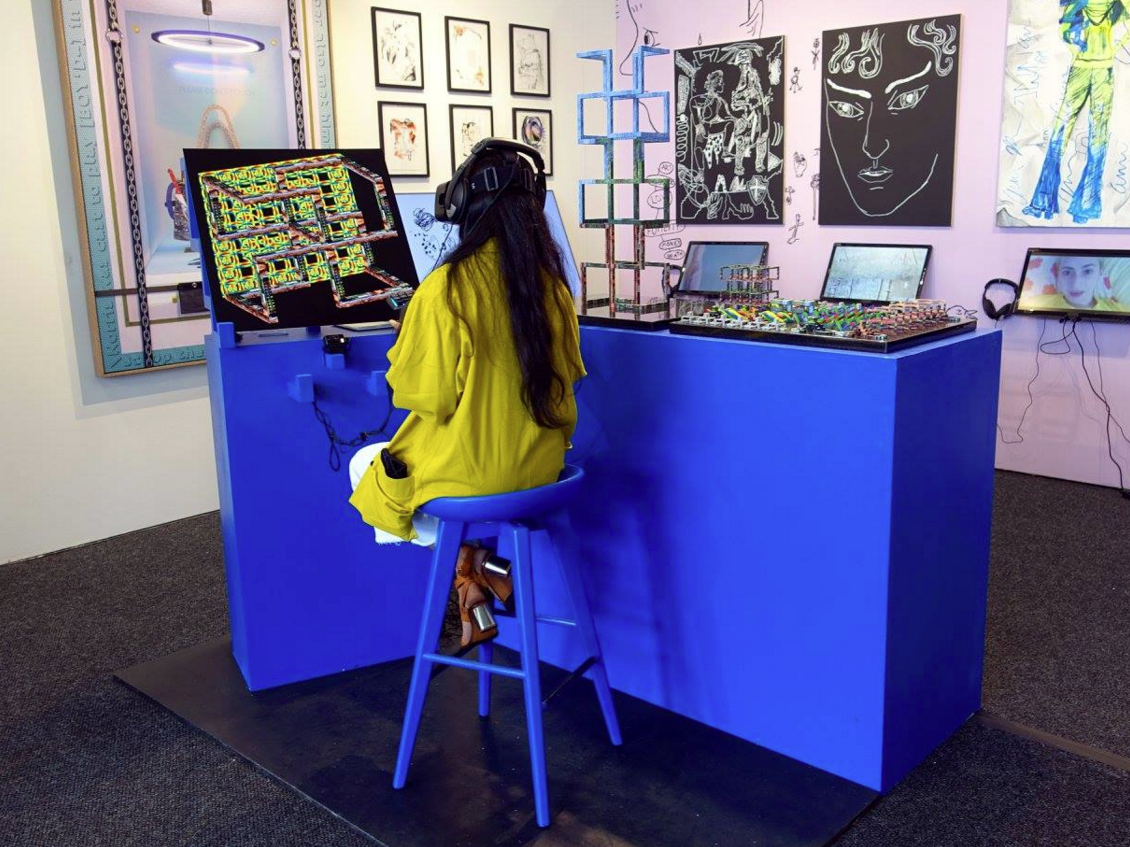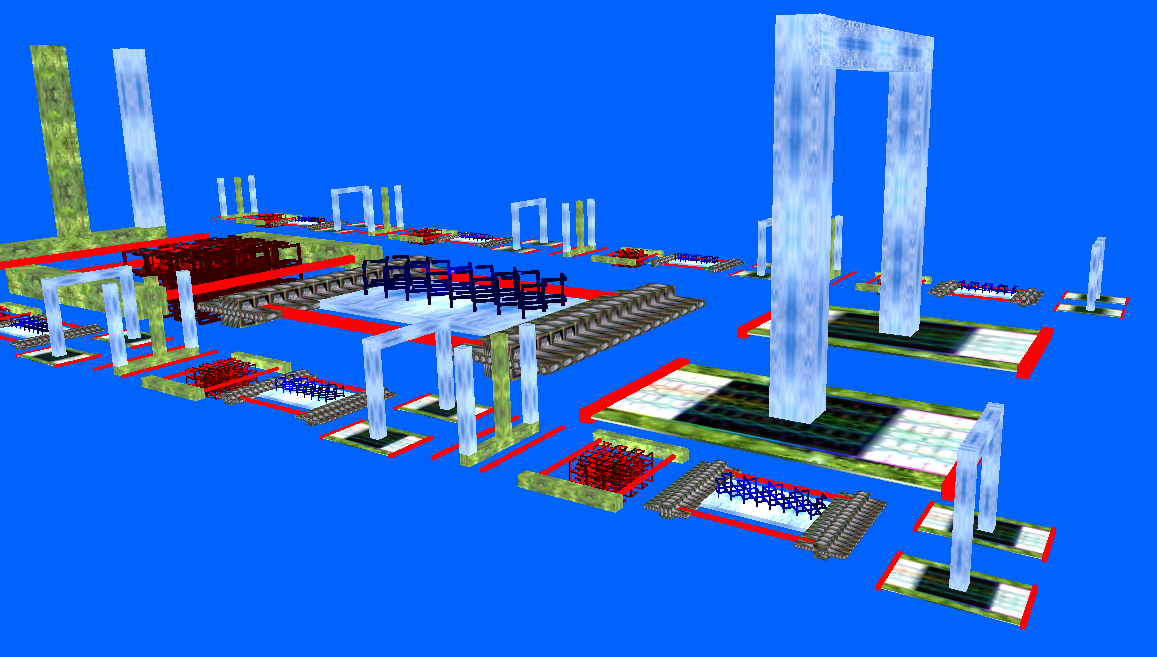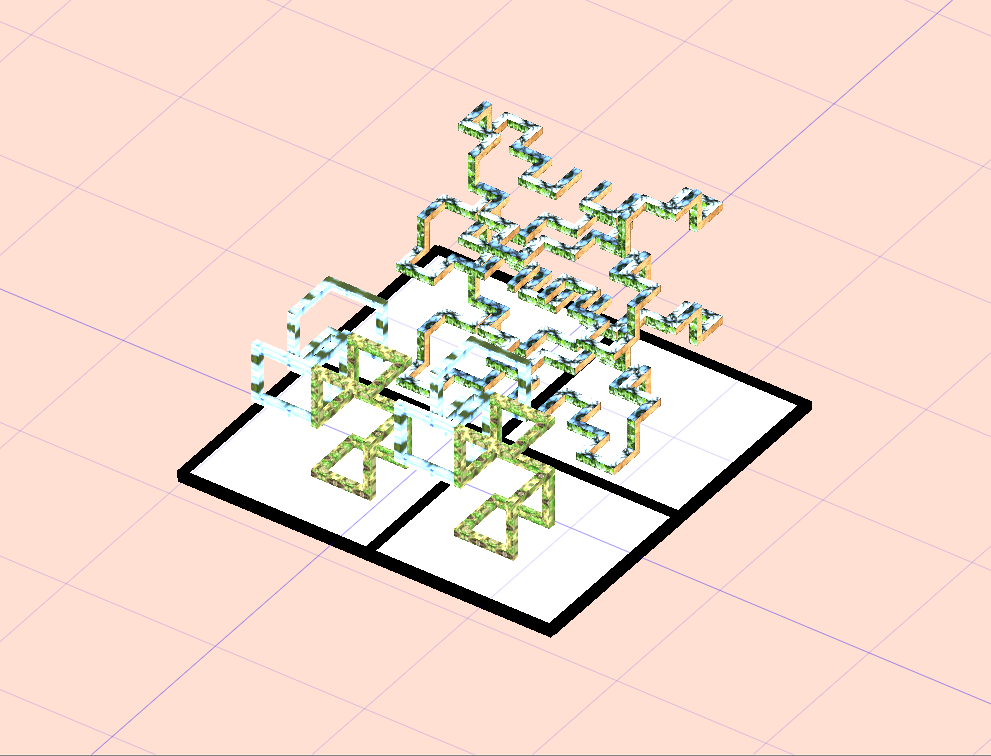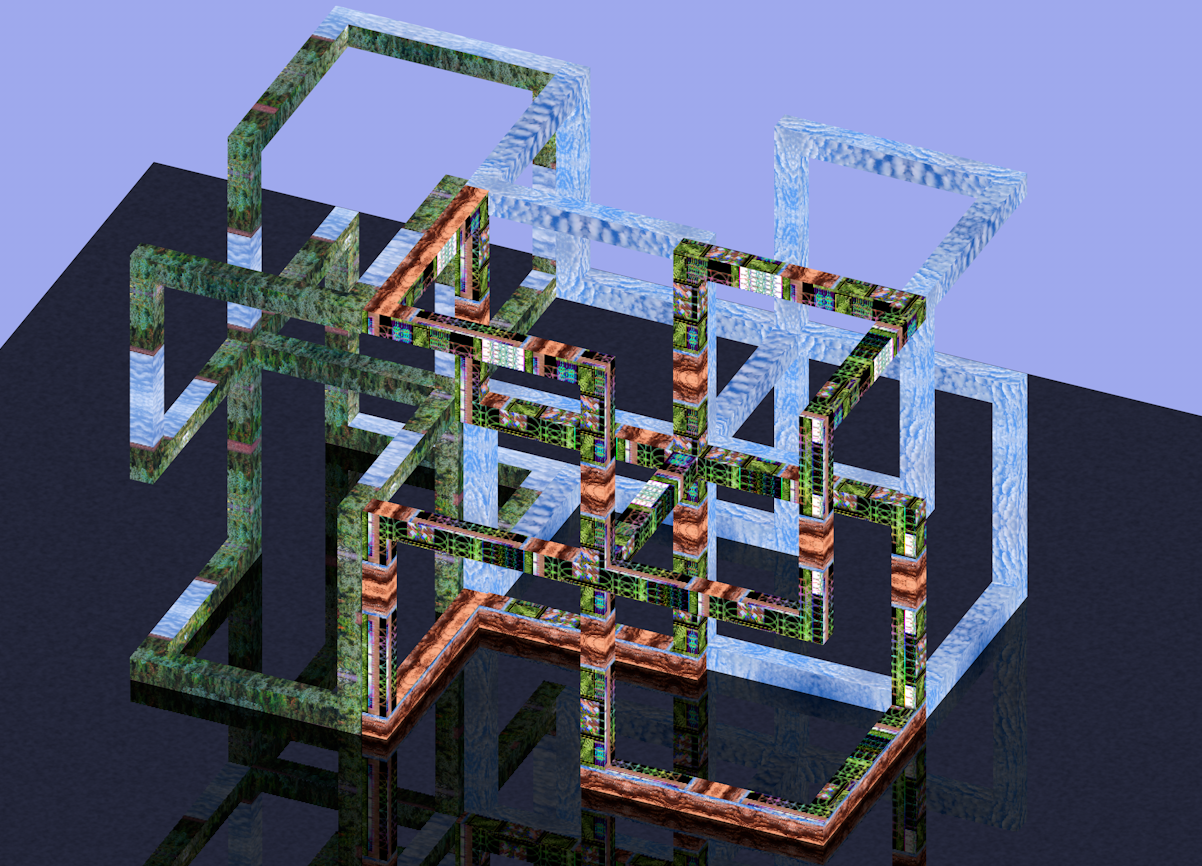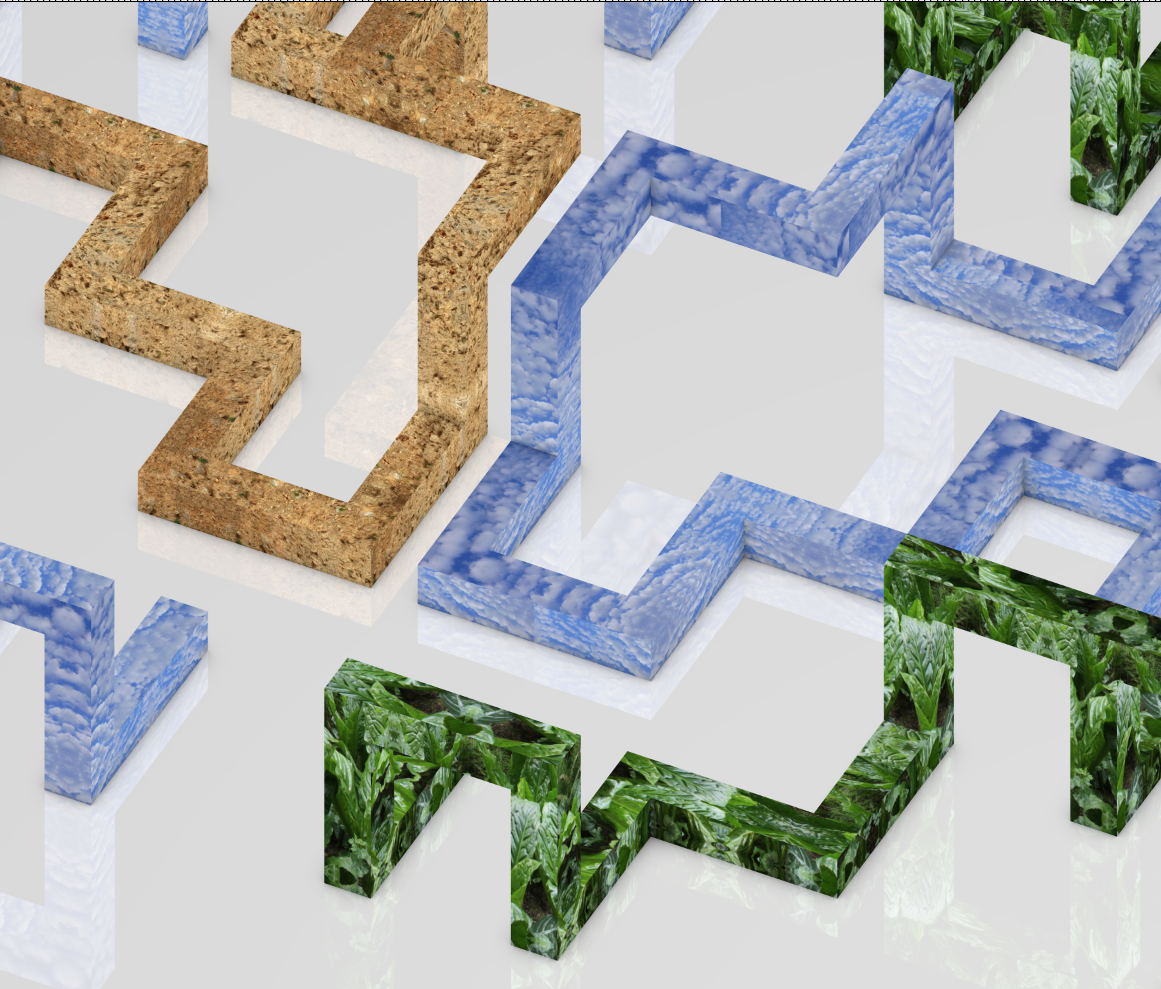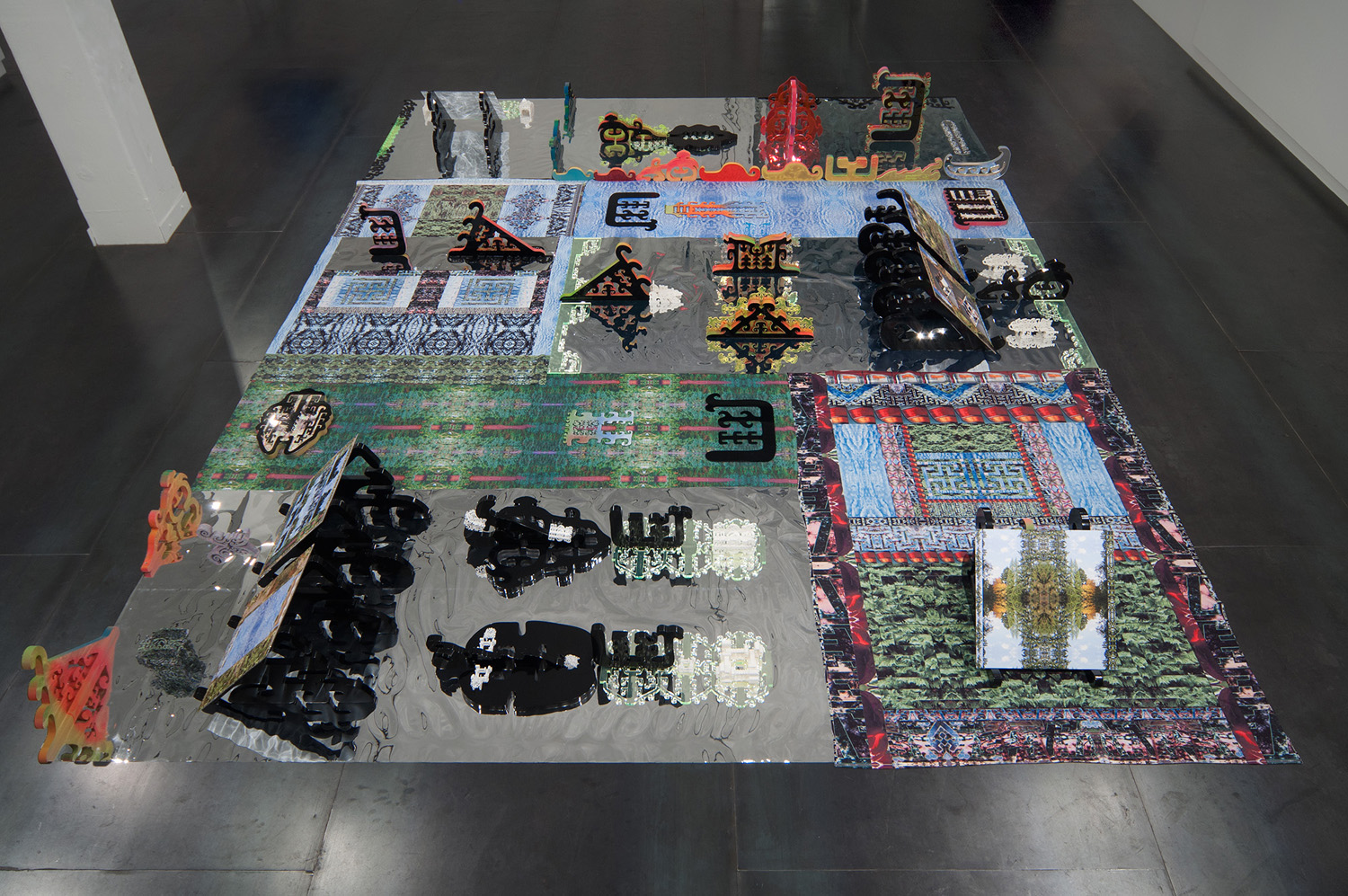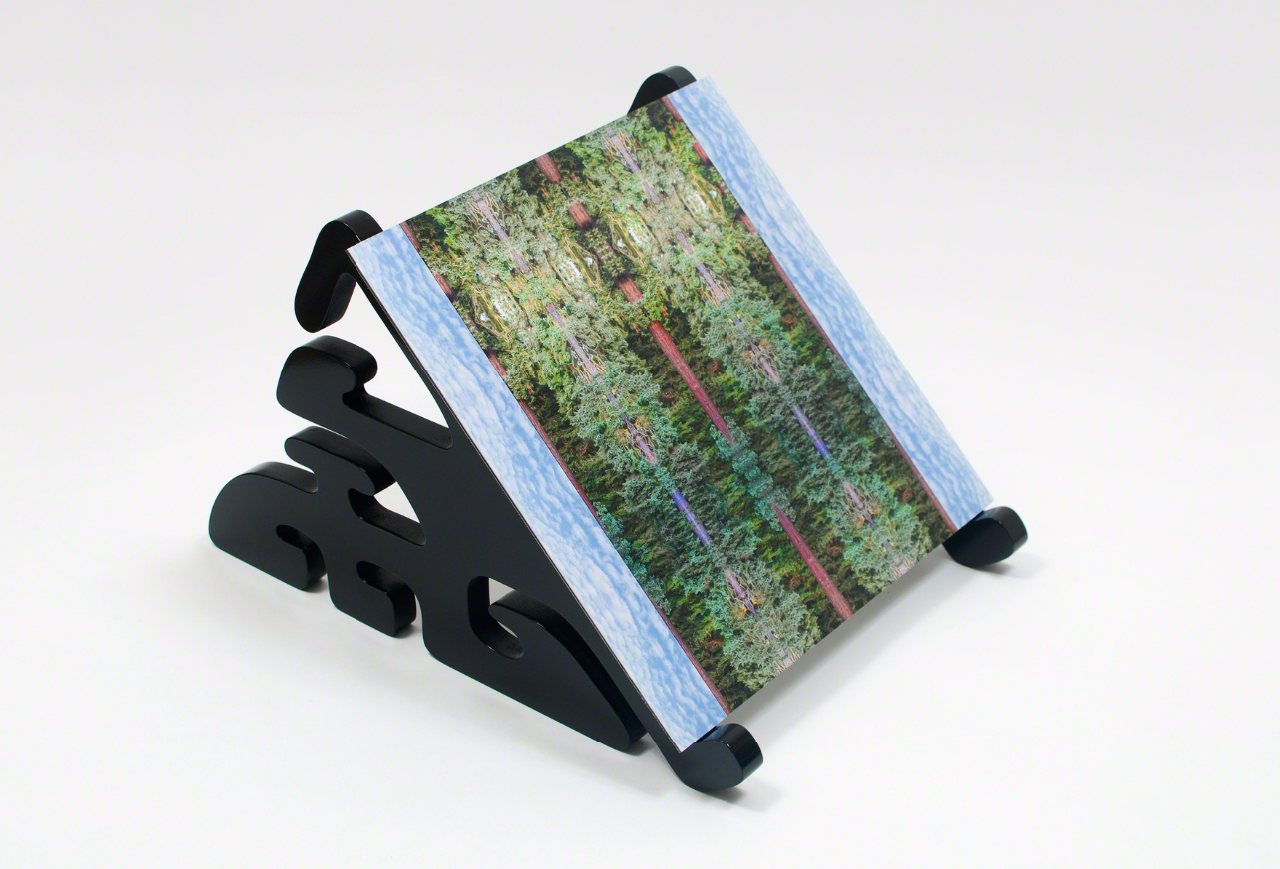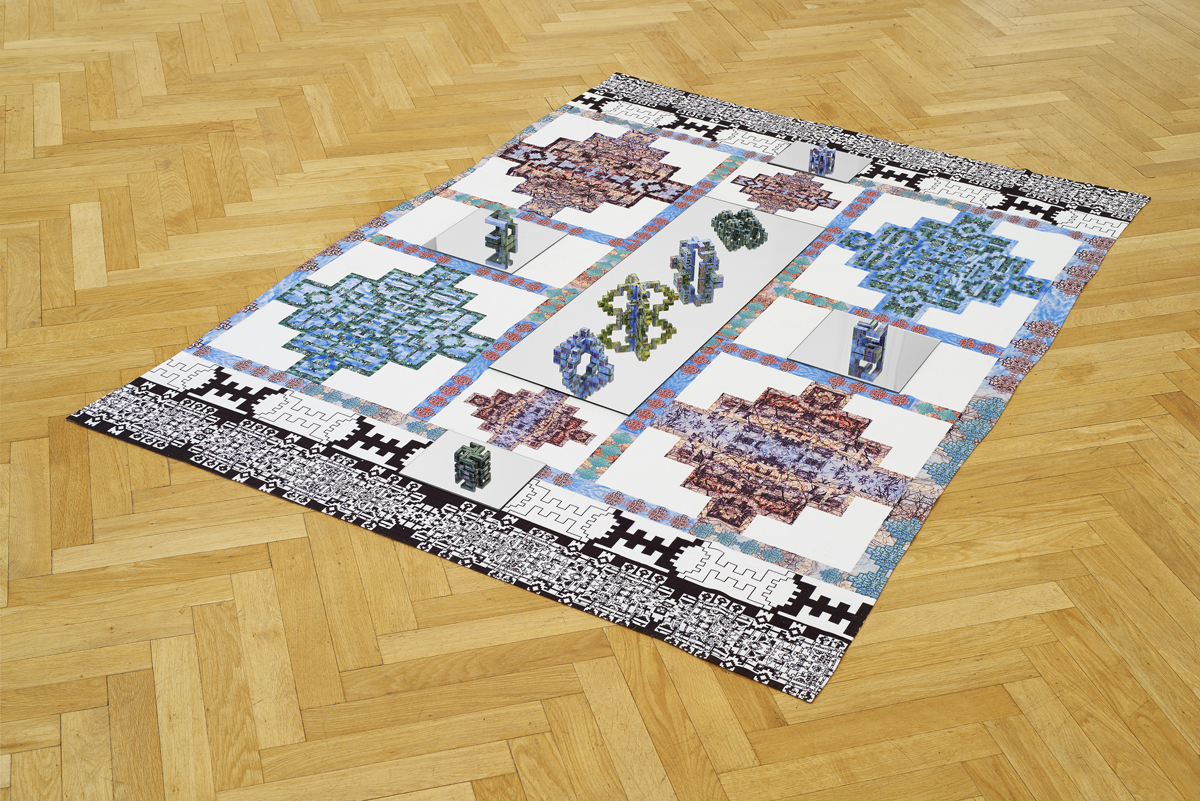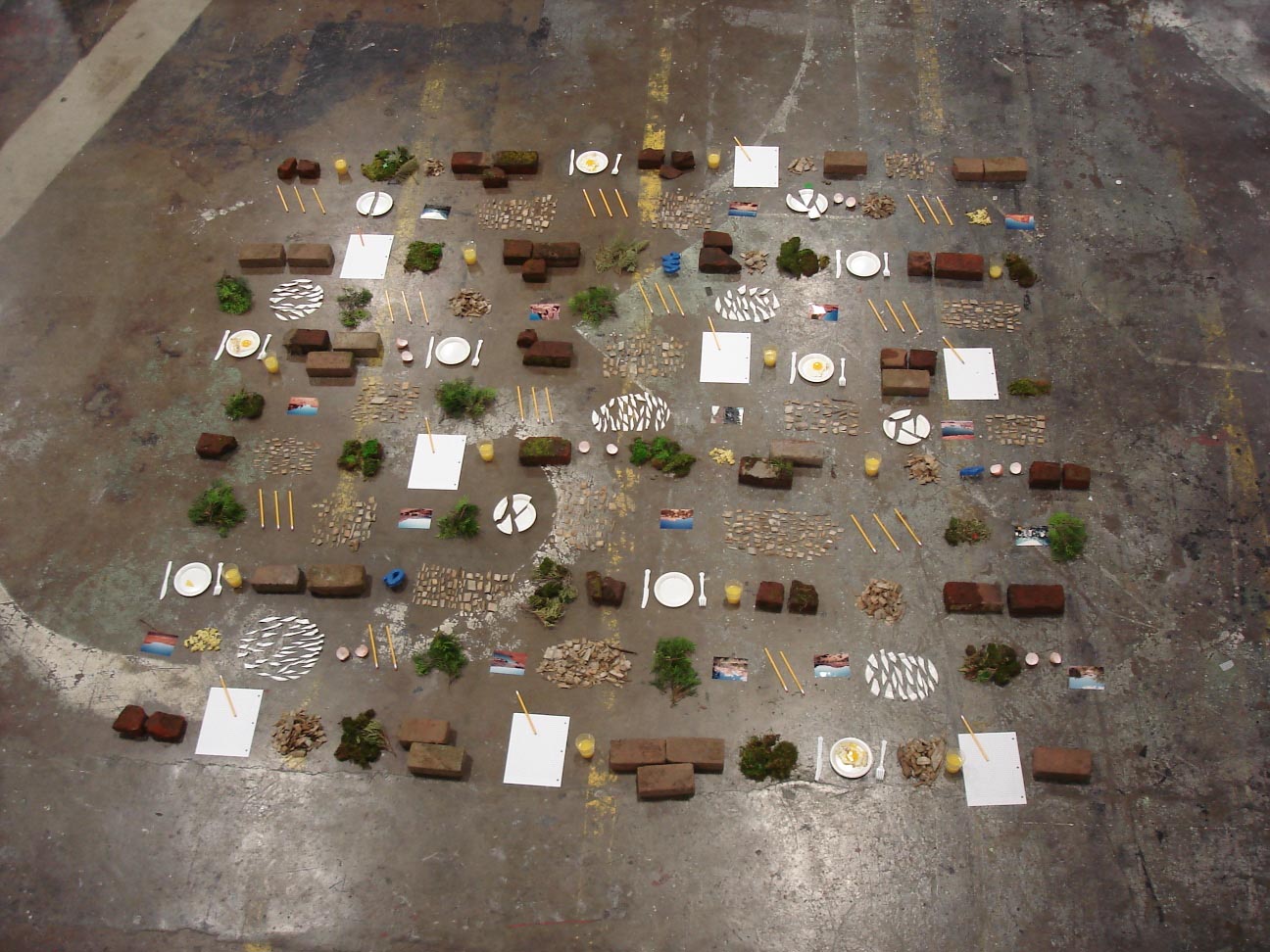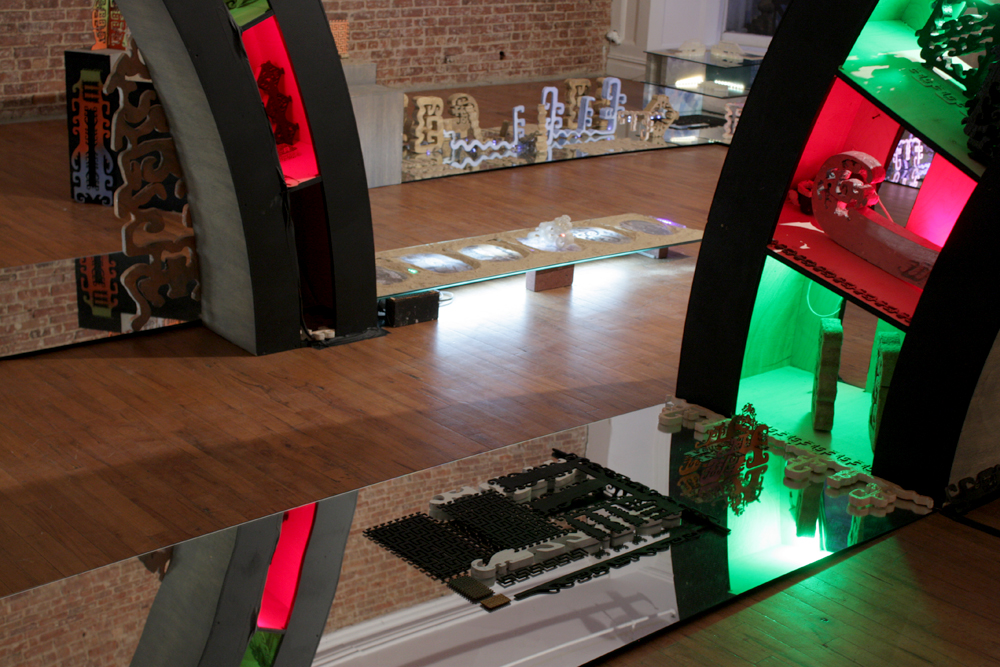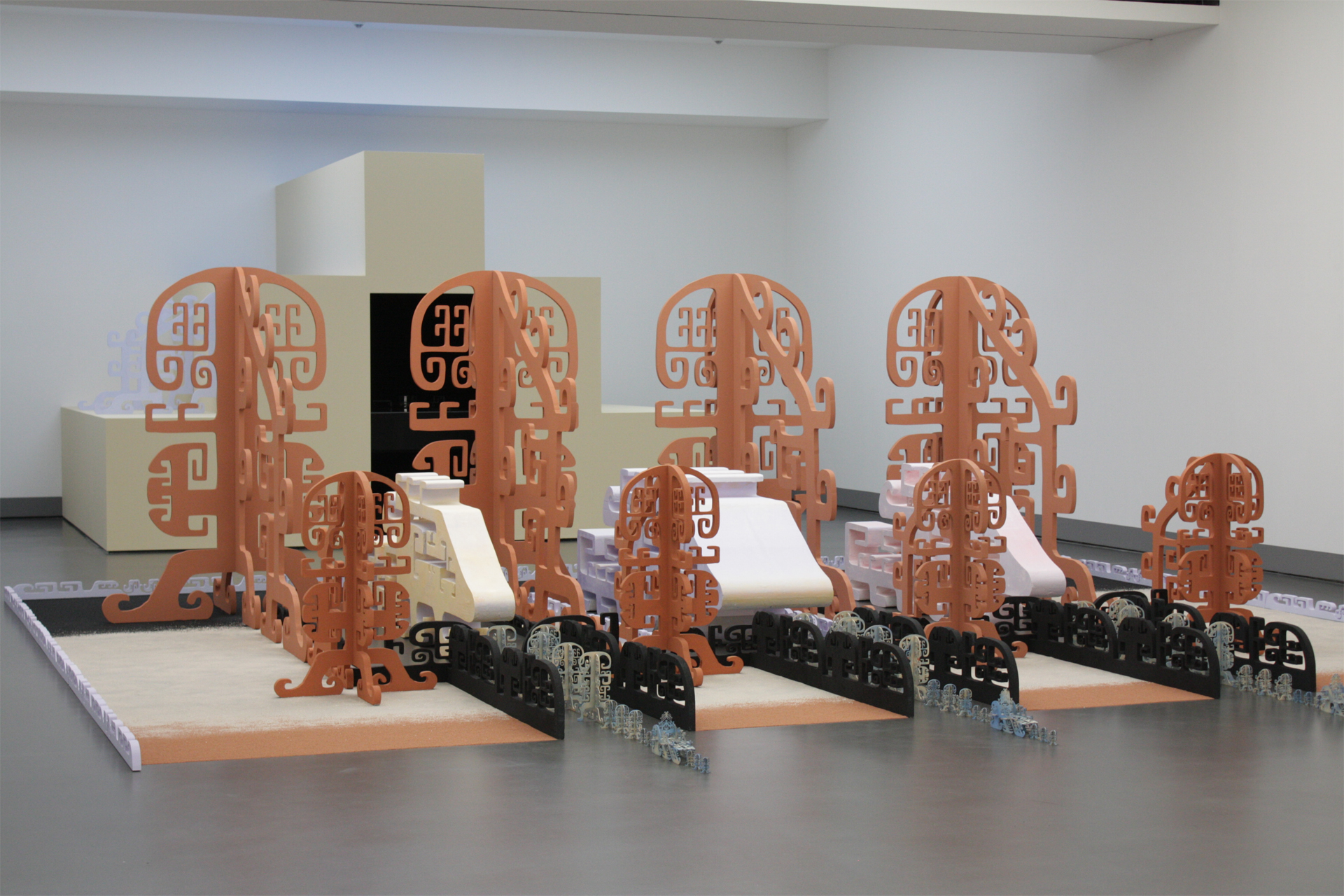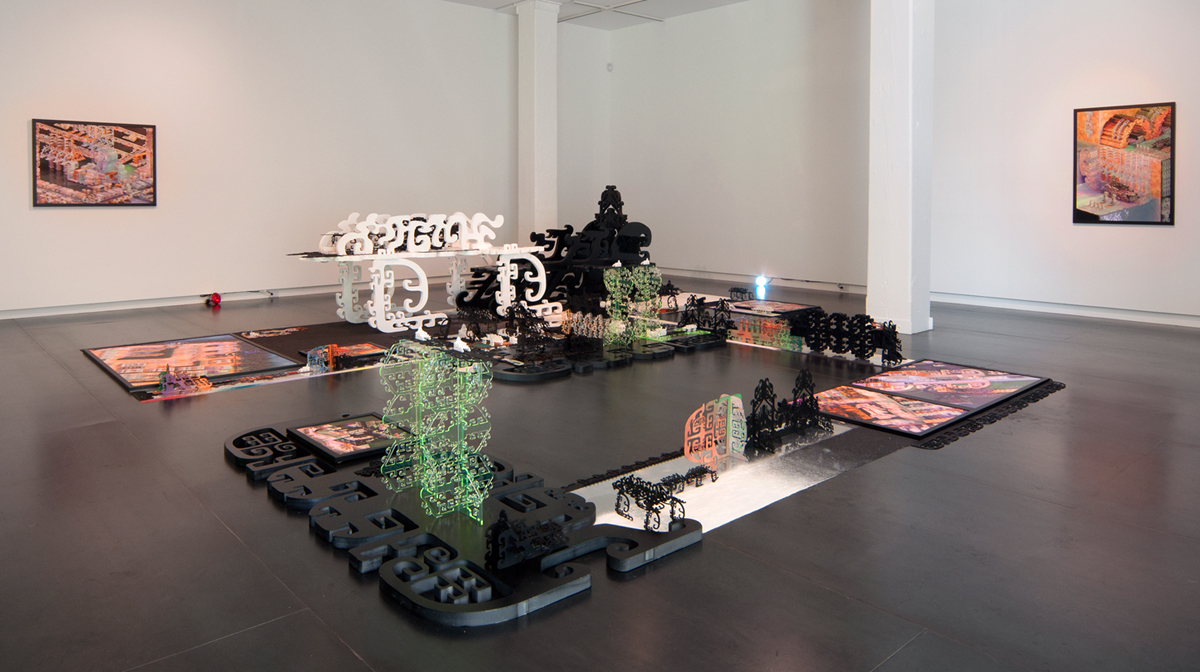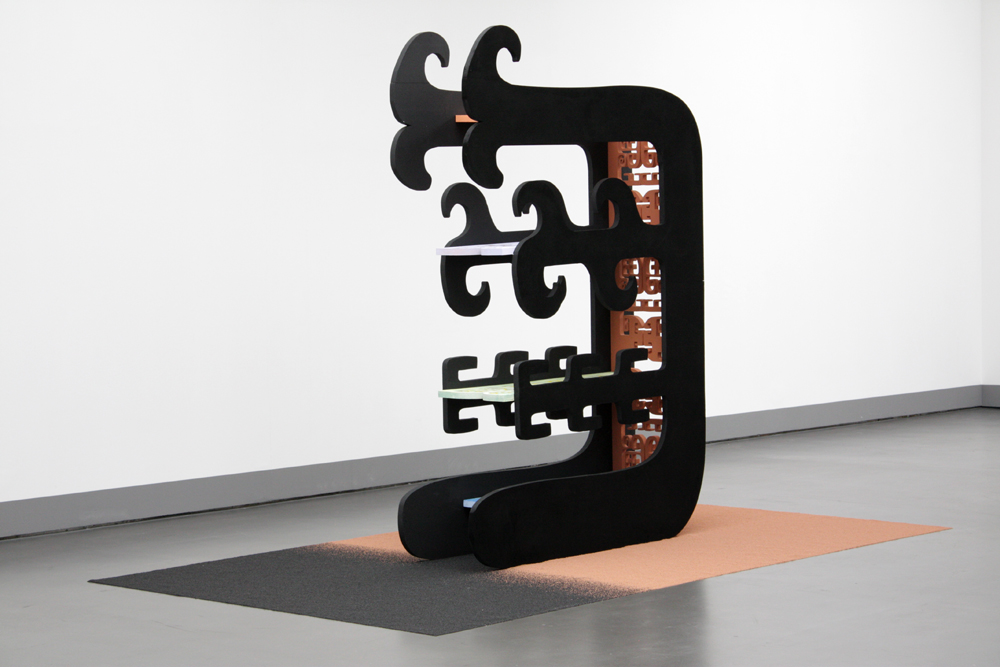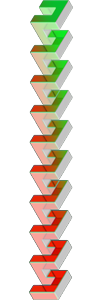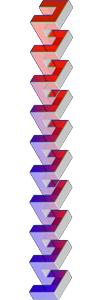![]()
![]()
![]()
PROJECT OUTLINE:
I propose to develop a sculptural installation that exists across virtual and physical space. The physical realm will be a custom printed tapestry placed on the floor. A Virtual Reality headset will be hanging from the ceiling. One viewer at a time will take off their shoes, enter the tapestry area and put on the headset.
Through the VR headset, the viewer will see a virtual sculptural realm extending to the perimeter of the floor tapestry. The viewer will explore the virtual landscape by physically walking around the tapestry area, an activity akin to navigating a meditation labyrinth. The graphics printed on the physical tapestry will correspond to the architecture of the virtual realm, showing where the virtual dimension is overlaid on the physical dimension.
The virtual realm will be composed of digitally sculpted geometric forms, wrapped in photographic textures. The composition will be a poetic model of reality- a geometric abstraction of the physical spaces that surround us as we walk down the street. The surface of the sculptures will be textured with patterns woven from photographs of natural materials such as clouds, plants and dirt. A cube wrapped in tiled clouds becomes SKY, a lattice shape coated in tiled soil texture becomes EARTH. The viewer will find themselves navigating through a world of abstracted elements.
How much of our experience of the physical world already exists on the virtual plane? As we walk down the street, we don't perceive a natural, objective organization of all the surrounding raw materials- rather, our mental-filtration system translates the materials into abstracted forms based on our human scale perceptual framework, allowing us to find familiar guides as we move through space. When I go on walks through my neighborhood, I try to be aware of this automatic mental process- I try to SEE the shape of the filtration system, and through it, the shape of reality. Is it a fractal cluster of stratified materials with unfathomable complexity? Is it an infinite empty plane with a rectangle signifying "sidewalk" and a cube signifying "tree"? Or is it both at once? These are some of the conceptual meanderings I will be working through as I develop the project.
I have worked extensively with virtual reality and with physical sculpture, but have only just begun to combine the two. Creating a sculptural installation that overlays a virtual realm onto a physical realm is an obvious direction for my work.
PRACTICALITIES:
Common VR headset models (Oculus) only allow viewers about one square meter of physical movement. Otherwise the viewer must use a joystick to navigate the virtual realm. I will be using a different type of VR headset (Vive) that actually allows viewers a physical navigation space of 20 square meters. The difference is significant. Navigating a virtual space by actually walking through it rather than simply using a joystick heightens the surreal dissonance of embodied virtual navigation. This is the juicy point of intersection that I wish to excavate with this project. I am interested in virtual reality for what it can reveal about the perceptual frameworks of physically embodied experience.
I am friendly with a collective called Portland Immersive Media Group who own a Vive VR headset. They are open to sharing it with me for testing purposes. So I can use this resource throughout the development of the project. If I am awarded the full grant, I would purchase my own headset in order to extensively explore the parameters of the medium. I expect the project to evolve through this research. I would then use the headset to make the exhibition at Fotomuseum Winterthur (or another space).
I have built numerous virtual realms already, so I am confident with my skills and ability to construct virtual spaces. All of my pieces have been designed for navigation through a computer screen until recently. Last month, I was finally able to exhibit a realm on an Oculus VR headset. The transition from computer interface to VR headset interface was pretty smooth, but there were some kinks that I was able to work out in the process. I look forward to gaining further experience with the parameters of fully immersive VR through this project.
I have designed and constructed many physical sculpture installations, and I will be drawing from those skills to give the virtual sculpture installation the uncanny physical-ness that the project requires. Not through a heightened realism of atmosphere, but rather through a structural realism based on scale and arrangement. My experience with physical installation will also aid me in developing the physical aspect of the installation. I have worked a lot with custom printed tapestries and developed a good sense for how to work spatially.
ARTIST STATEMENT:
I’m interested in expanding my perspective on the fundamental shape of reality. What is this realm of objects and entities in which I find myself? How is it arranged spatially and how does its temporal dimension unfold? For me, art is a method for engaging with these basic questions. I think of my work as poetic models of reality. I work intuitively, designing shapes/textures, arranging them in space, navigating and regarding them. It’s an exercise that keeps my senses alert to the subtle, goopy ingredients that hold things together. At its best, my workflow can become a positive feedback loop: observing reality, making models, considering the models, observing reality, and so on, expanding my mental framework further with each run through the loop.
I use an array of nested computer graphics programs to construct virtual realms, generate textures, sculpt forms, splice temporal sequences etc. Using the computer as a tool and medium leads to a liquid approach. Anything I create can be zoomed/cut/colored/repeated. The process for me becomes all about this dance, feeling out the inherent flow of interlocking digital systems by weaving pathways through them.
Building bridges between physical and virtual space is a fundamental part of my practice. While so much of my work is embedded in the digital landscape, I also work heavily in the physical realm, manifesting objects through digital fabrication and constructing sculptural installations. I find that keeping an active workflow across dimensions can expand my approach to each. My main physical exercise has been “arranging.” The act of intuitively organizing units until they form a cohesive vibrating system that reflects my impressions of the shape of reality.
At its core, my workflow is a set of activities that I can pour my mind through to exercise it, make it more malleable, more self-aware and hopefully expanded so that I can see and understand more deeply the meta-structure of reality and my place in it.
![]()
Below are some preliminary sketches of the project to illustrate the general direction of my plans.
SKETCH OF PHYSICAL SPACE, visitor standing on tapestry, with VR headset~~~>

SKETCH OF VIRTUAL SPACE, sketches of what the viewer will see through the VR headset, overlaid on the room~~~~~~>
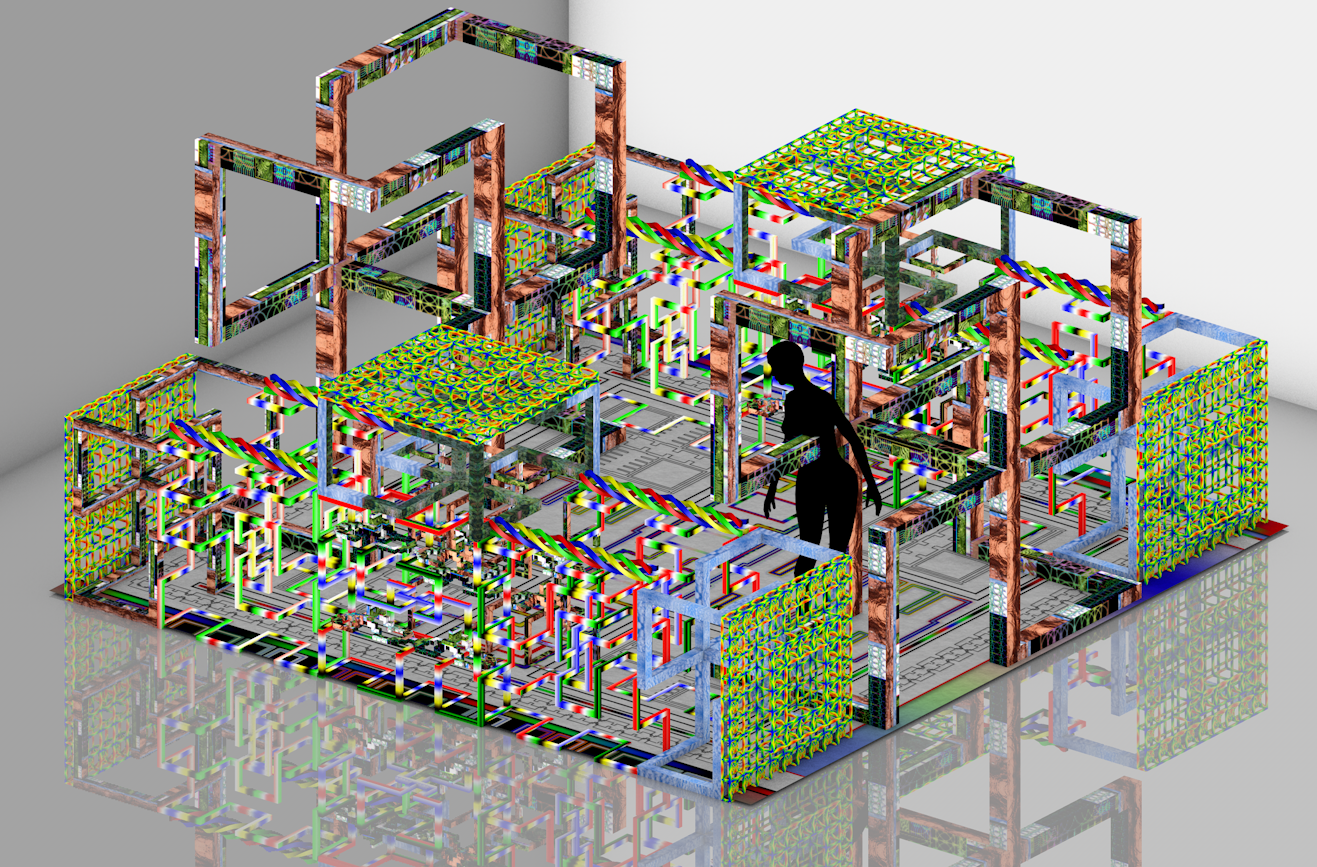
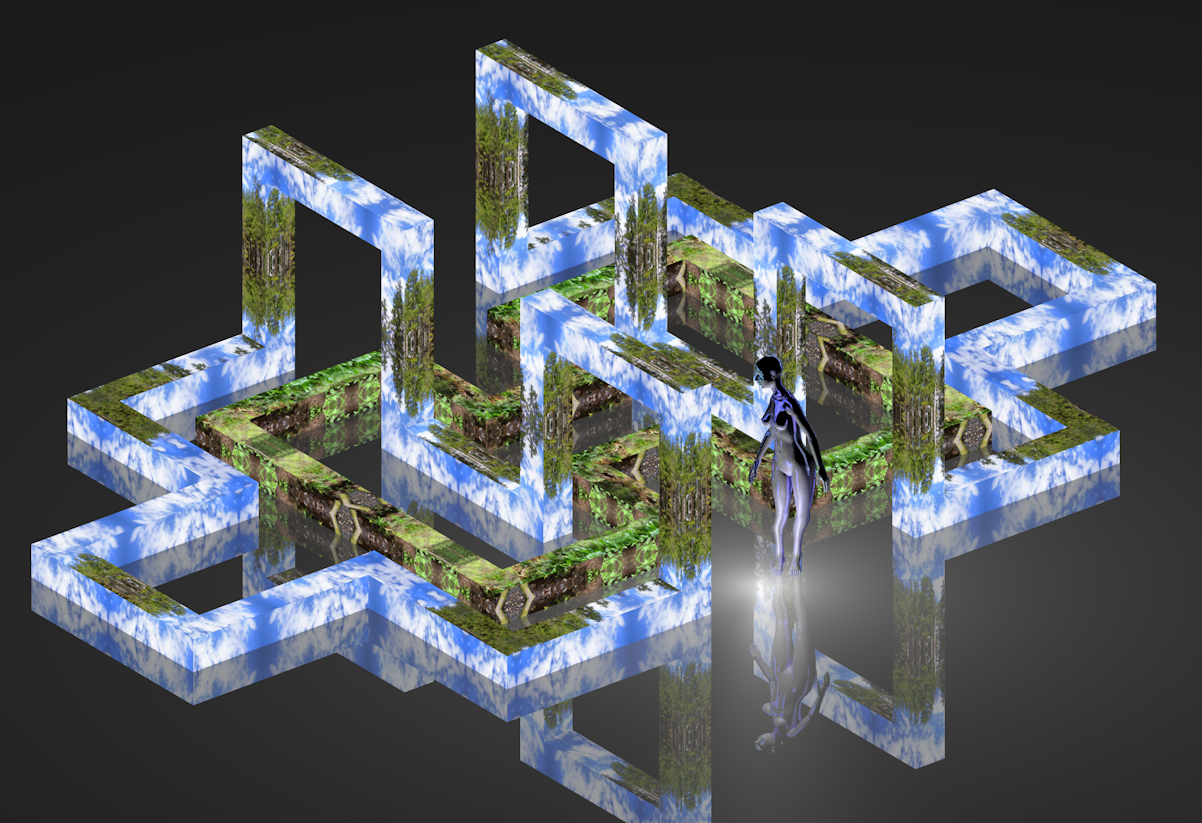
SKETCH OF VIEWER'S PERSPECTIVE of the virtual realm thru the VR headset~~~~~~~~>

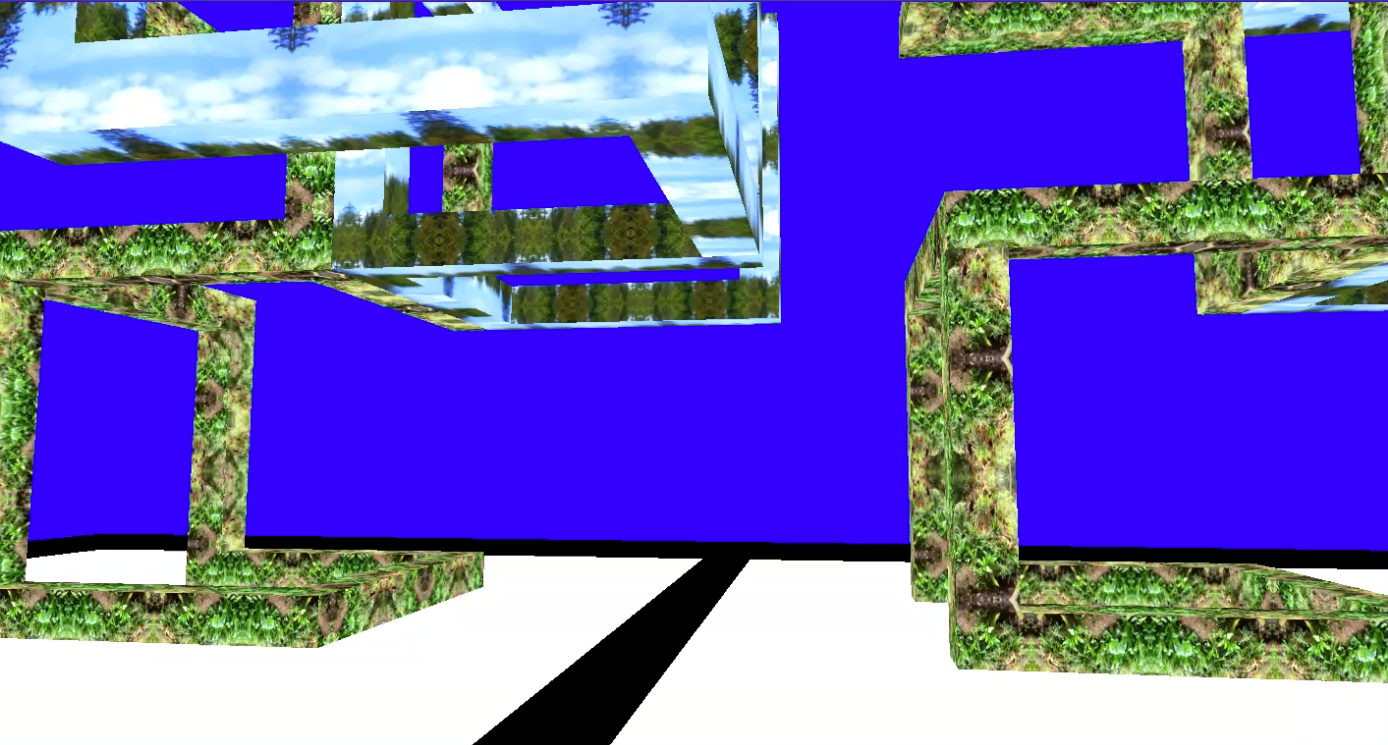

~~~~~~~~~~~>>>>>>>>SCROLL~~~~~~~~~~~~~~~~~~~~~~~~~~~~>>>>SCROLL~~~~~~~~~~~~~~~~~~~~~~~~~~~~~~>>>>

